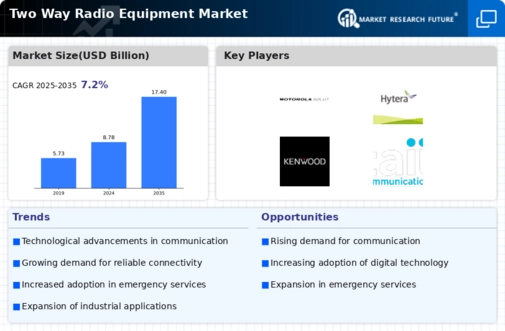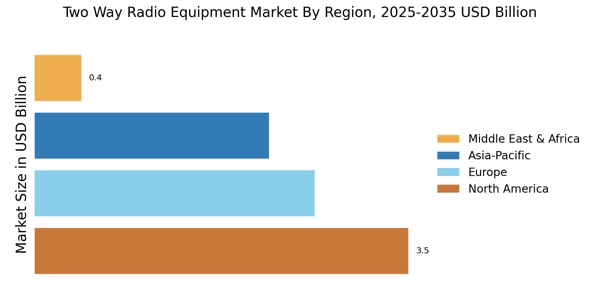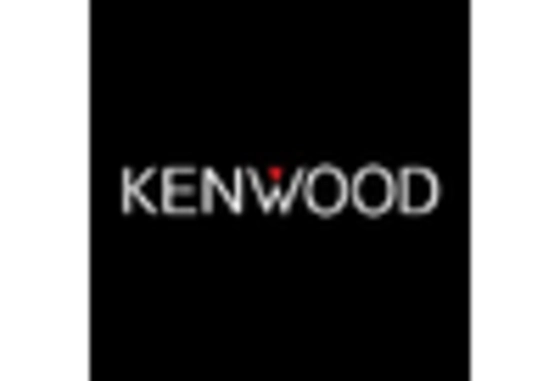Expansion of Industrial Applications
The Two Way Radio Equipment Market is witnessing an expansion in industrial applications, which is driving market growth. Industries such as manufacturing, transportation, and logistics are increasingly adopting two-way radios for efficient communication among teams. The ability to coordinate operations in real-time enhances productivity and safety in these environments. Furthermore, the rise of smart factories and automated systems is creating new opportunities for two-way radio integration, as these devices can facilitate communication between machines and personnel. As industries continue to evolve and embrace new technologies, the demand for two-way radios is expected to grow, reflecting their versatility and effectiveness in various applications.
Growing Adoption in Emergency Services
The Two Way Radio Equipment Market is significantly impacted by the growing adoption of two-way radios in emergency services. First responders, including police, fire, and medical personnel, rely on these devices for real-time communication during critical situations. The ability to communicate instantly and reliably can be a matter of life and death, which drives the demand for advanced two-way radio systems. Recent statistics indicate that the emergency services sector accounts for a substantial portion of the market, with projections suggesting a continued increase in investment in communication technologies. This trend highlights the essential role of two-way radios in enhancing public safety and operational effectiveness.
Shift Towards Cost-Effective Solutions
The Two Way Radio Equipment Market is also influenced by a shift towards cost-effective communication solutions. Organizations are increasingly seeking budget-friendly alternatives to traditional communication methods, which often involve higher operational costs. Two-way radios offer a one-time investment with minimal ongoing expenses, making them an attractive option for businesses looking to optimize their communication budgets. This trend is particularly evident in sectors such as retail and hospitality, where efficient communication is essential for customer service and operational management. As companies continue to prioritize cost efficiency, the demand for two-way radios is likely to rise, further propelling market growth.
Increased Demand for Reliable Communication
In an era where effective communication is paramount, the Two Way Radio Equipment Market is witnessing a surge in demand for reliable communication solutions. Industries such as construction, security, and emergency services rely heavily on two-way radios for seamless communication. The need for instant and dependable communication channels has led to a significant increase in the adoption of two-way radios, particularly in remote and challenging environments. According to recent data, the market is expected to reach a valuation of USD 5 billion by 2026, reflecting the growing reliance on these devices for critical operations. This trend underscores the importance of two-way radios in ensuring operational efficiency and safety.
Technological Advancements in Communication
The Two Way Radio Equipment Market is experiencing a notable transformation due to rapid technological advancements. Innovations such as digital signal processing, enhanced battery life, and improved audio clarity are becoming increasingly prevalent. These advancements not only enhance the user experience but also expand the functionality of two-way radios, making them more appealing to various sectors. For instance, the integration of GPS and Bluetooth technology allows for more versatile applications in industries such as public safety and logistics. As a result, the market is projected to grow at a compound annual growth rate of approximately 7% over the next five years, driven by these technological enhancements.

















Leave a Comment